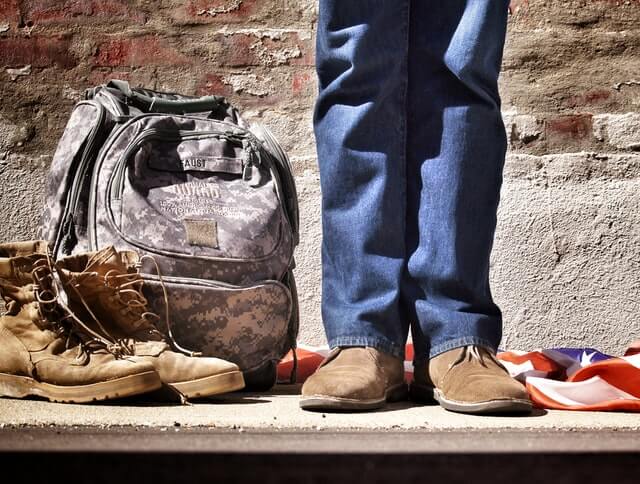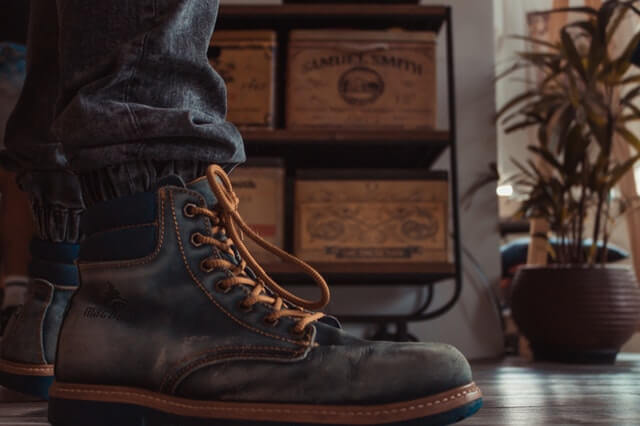Rucking is a form of fitness that includes walking with a heavy backpack, and it has become increasingly popular in the last few years.
People interested in starting rucking for this year should know what gear to buy to get started, the best places to ruck, and how to avoid injury.
Reasons to Start Rucking
As physical activity and fitness become an increasingly popular way to stay healthy, many people are beginning to try out different types of workouts. One such type of workout is rucking.
Rucking is a form of weight training that requires participants to carry a backpack/rucksack with weights in it, and it’s quickly becoming one of the most popular exercises around. Here are some reasons to start rucking:
- Rucking is an excellent form of weight training because it combines the benefits of walking and weight lifting.
- Rucking is a lot easier than traditional weight lifting.
- It helps improve your posture, balance, and overall flexibility.
- It can also burn calories while you get a great workout.
- Rucking can decrease the risk of cardiovascular diseases.
- Rucking can help build strong shoulders, arms, and legs.
- It is easy and cheap to start.
How to Start Rucking: What You Need to Get Started

Getting into rucking is not something that most people know about. Rucking, or marching with a weighted backpack, has many benefits to the body and mind.
Here are some tips on what to purchase for your first ruck, how to train for your first ruck, and how to do your first ruck.
Equipment
The gear necessary to start rucking is not expensive and can be picked up at most sporting goods stores. With the right gear, it is very beneficial for someone to start a new hobby.
The approximate cost of this basic equipment will vary depending on the quality and weight of the backpack, but a basic set-up should cost around $100.
You will need:
Rucksack
A rucksack that is big enough for your weight and is comfortable to wear.
Weights
Starting with 10% of your body weight is ideal for beginners. If you don’t want to purchase rucking plates, you can use water bottles or even bricks.
Make sure to keep your heaviest weight closer to your back. The weight distribution will make carrying the weight a bit more comfortable.
Boots

Military boots are great but you can use normal shoes if the terrain allows it. Do not use brand new boots or shoes for a full ruck because they can cause blisters.
Socks
Merino Wool is a silk-like, durable fabric that is always a good choice. If you do not have them to wear already, it’s okay. Just make sure to wear any socks that have good compression and are long enough to avoid any friction between the shoe and your leg.
Hydration
Staying hydrated is crucial for your well-being. You can get a rucksack that has a hydration bladder. This way you don’t have to stop putting the rucksack down and get your water bottle.
Route
Planning your routes helps you stick to your routine and makes your training program more organized. Rucking apps or modern watches can monitor this for you. But not everybody has one of those modern watches, well, in that case, you can use a website called https://www.plotaroute.com that you can access on your phone.
There are some mobile apps that can help you with that too.
A decent long-term goal would be to average around 15-minute per mile over three to five miles.
Workout Plan
This plan will gradually and carefully elevate your fitness level and gradually increase the amount of weight you carry.
In the first week, walk on 1.5 miles while carrying 10% of your body weight. Each week add either 5 more pounds or one more mile to your workout plan.
Here is the entire plan:
| Rucks per week | Distance | Time | Weight | |
| Week 1 | 1-2 | 1.5 miles | Do it at your own pace | 10% |
| Week 2 | 2-3 | 2.0 miles | 1 hour | 10% – 15% |
| Week 3 | 2-3 | 2.5 miles | 1 hour and 30 mins | 20% |
| Week 4 | 2-3 | 3.0 miles | 2 hours | 20% – 25% |
| Week 5+ | 2-3 | 3.5 miles | 2 hours and 20 mins | 20% – 25% |
As you noticed the most rucks recommended per week are 2-3. This is because more than this can be a problem, especially for beginners.
Tips for Beginners
The following are some helpful tips for beginners on how to start rucking:
Posture
Proper posture is crucial because it supports the body’s weight, increases mobility, and reduces strain on the back.
When rucking improperly, a person could risk injury- including back pain, knee pain, hamstring strains. Proper posture should be adopted whether carrying weight or without weight in order to prevent injury.
The back length of the backpack should cover your back, while the help belt should be centered and secured around your hip bone.
Stretching
Stretching before and after rucking is an important step to maintaining healthy joints and reducing muscle soreness.
When you stretch before rucking, you are preparing your muscles for the physical activity that will be about to take place.
Stretching following a ruck also helps keep muscles loose so they don’t become too stiff. Stretching should be done at least five minutes before or five minutes after rucking.
Hydration
Hydration is very important when rucking because it refreshes the body, reduces the chances of fatigue, and keeps the body temperature cool.
Ruckers should make sure to drink water before, during, and after a ruck.
Longevity
Longevity is an often overlooked part of rucking. When planning your next event, be sure to include some easy-to-do stretches for your back, shoulders, and hamstrings. It will help you stay moving for longer periods of time without experiencing pain or fatigue.
In order to reduce the risk of injury you want to start at your own pace and only carry 10% of your body weight. Rucking more than 2-3 times per week can be a bad idea for most people.
Frequently Asked Questions
Conclusion
In conclusion, every person should try rucking at least once. The benefits of rucking are numerous, and it can be a great cross-training alternative to running or biking.
Rucking is a great way to get in shape and improve your day-to-day life. The best part about it is that you can do it any time, anywhere. You don’t have to wake up early or drive miles away from home.
The simplest way to start rucking is with a backpack, some water, and a goal. Set aside 30 minutes two times a week and take off on an adventure!



